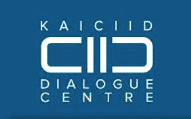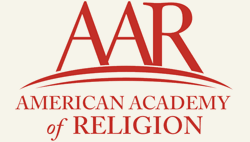By Bud Heckman
REPORT: A SEASON OF INTERNATIONAL INTERFAITH CONFERENCES
Late November included some intense days of interreligious conferencing at the 10th Assembly of the World Council of Churches, the KAICIID Dialogue Centre’s Global Forum, the Religions for Peace 9th World Assembly, and the American Academy of Religion’s Annual Meeting.

The following observations come in the midst of these gatherings of leading experts on religion and education, especially with actors from the still emerging field of interfaith and intercultural relations.
What was obvious in all these settings were the strong cultural forces at play in our world today, forces that are shaping the future face of religions and how people of diverse faiths (and no faith) interact with one another.
These forces fall in at least five broad categories worth exploring:
- geographic and resource shifts within traditions,
- the advent of social media and technology,
- low-cost, accessible travel and greater exposures to diversity,
- identity fluidity in the under-30 set, and
- political interest of governments in preventing religious conflict and advancing understanding about religion.
These cultural and social shifts mean religions increasingly must find ways to define themselves in relation to the “other.”
A New World Emerging
First, there has long been a slow morphing and major geographic adjustments of faith traditions and a corresponding shift of resources. A massive movement in the population of faiths to the global South is no secret. Major denominations and traditions in the global North are waning. Europe’s population of Christians has dropped to just a third of its former self in 100 years, while Africa’s in the corresponding time grew 11-fold. In the United States, my own denomination – The United Methodist Church – was once synonymous with American growth. Not so long ago it boasted having more churches than U.S. post offices and a church in every U.S. county. Today, it is down more than three million congregants from its peak a few decades ago.
Many leading institutions which gave birth to new institutions and eras of interfaith relations are now in financial peril, such as the National Council of Churches, the Parliament of World Religions, and the Interfaith Conference of Metropolitan Washington. As a silver lining, it is important to note that each has spawned healthy offspring, vibrant offspring organizations and collaboratives.
Second, the advent of social media and new forms of technology allow people to take media and communications into their own hands. It makes what was once distant appear close and provides detail never before evident. What changes peoples’ hearts and opens their eyes and sensitivities to the religious “other” is real, lived experience with the “other.” Social media and new forms of technology can make the previously invisible, visible. Social media and technology also make it increasingly difficult to be cocooned off from external data points and experiences of the “other.”
Third, the advent of low cost, accessible travel has altered how many see the world. Not only can we travel to where the “other” is; the “other” can come to where we are. So fewer places are homogeneous, and diversity of some sort is everywhere. This eventually leads to migration and, as a result, increasingly diverse educational and work environments. With love being what it is, it also means that interfaith marriages are on the rise as our environments become more diverse. Having the religious “other” reflected within one’s own family is increasingly common. Them becomes us and vice versa.
Fourth, a surprisingly sharp division has emerged in dispositions toward religions along generational lines. One largely cited example is the sharp rise of “nones and nons,” those folks who either claim no religion (atheist or agnostic), are spiritual-but-not-religious (don’t buy into institutional religious frames), or who embody more than one spiritual or religious path in their own practice or view of self (rejecting the boundaries of a singular faith). A couple of decades ago this category accounted for no more than a single-digit percentage of the population. Today it accounts for one of every five people in the States, and one in every three amongst those under 30 years of age. The numbers are even higher in Europe and China. This means there is a great deal of fluidity in identity that is socially permissible in ways that simply were not true before.
Fifth, governments have finally come to realize that: 1) they benefit from cooperating with and seeking to amplify the powerful force for good that religions can be in society, and 2) they cannot ignore including religions as part of the solution in dealing with social problems and conflict.
When the U.S. invaded Iraq in 2003, Religions for Peace worked to build a diverse coalition of religious leaders to prevent interreligious conflict and expedite the delivery of humanitarian assistance. It was an effort that was ignored by Paul Bremer and the Governing Provisional Authority at the time.
Fast forward ten years later, and the U.S. government is working with Religions for Peace in trying to advance multi-religious cooperation in Syria, especially if there is a regime change. Today, the U.S. government is engaged with Religions for Peace on several fronts, including the recent opening of a Religion and Foreign Affairs Working Group in the State Department and appointing a special advisor to work with the Secretary of State on religious matters.
Religious and Political Leaders Paying Attention
These cultural and social forces are altering the way our rich faith traditions interact.

It has been reported by some that the 10th Assembly of the World Council of Churches in Korea had more outwardly looking interreligious discussion than ever before. Past Assemblies have been more dominated by “in-house” talk of strictly intrareligious/ecumenical concerns.

The new King Abudullah International Centre for Interreligious and Intercultural Dialogue (KAICIID) hosted its first global summit in late November during the first anniversary of its launch. KAICIID’s Global Forum follows a year of regional investigation of opportunities, challenges, and best practices in formal and informal efforts to advance religious understanding through education. The Forum was dovetailed with the 9th World Assembly of the Religions for Peace, a more than 40-year-old organization which advances the cooperative work of religious leaders and their communities. Religions for Peace (RFP) is the world’s largest representative network with interreligious councils in nearly 100 nations and regions, and RFP joins UNICEF in being the first partners of KAICIID.

During the KAICIID Global Forum, many commitments were made by governments and intergovernmental organizations, NGOS, and religious and interreligious actors. A number of these were ordinary, but some were bold. The KAICIID Secretary-General, H.E. Faisal A Bin Muaammar, proudly shared along with H.R.H. Prince Faisal Al Saud, Minister of Education, that KAICIID was being invited to work in cooperation with Saudi education officials on a comprehensive curriculum review in Saudi Arabia concerning the fair and equitable portrayal of religion in the Saudi Arabia. No small potatoes. And KAICIID announced formation of a global network of specialists who will collectively advance education efforts which focus on intercultural and interreligious understanding.
When KAICIID opened, some naysayers said it was nothing but a stark attempt by the Saudis to distract from their own repressions and failures at home. Others did not look the gift horse in the mouth. As one Israeli rabbi shared with me, how can one really argue with Saudi support for bringing a Jewish Israeli, Palestinian Muslims, and other key conversation partners together without putting any real strictures on the frame of the dialogue? And as a senior researcher in religious education remarked, where else could one ever possibly find such generous and liberal resources to advance structured and in-depth research on what methods and activities really will advance interreligious understanding? A genuine spirit of optimism prevailed amongst the experts and activists gathered in the conference.

The American Academy of Religion convened in Baltimore and gave keynote attention to interfaith and interreligious matters as it formally recognizes a new study group category for the field. This Interfaith and Interreligious Study Group is the principle outward step of formalizing the subject as a new field in the polity and parlance of academia. This year there were hundreds of references to “interfaith” and “interreligious” in the programming. We’ve come a long way baby.


